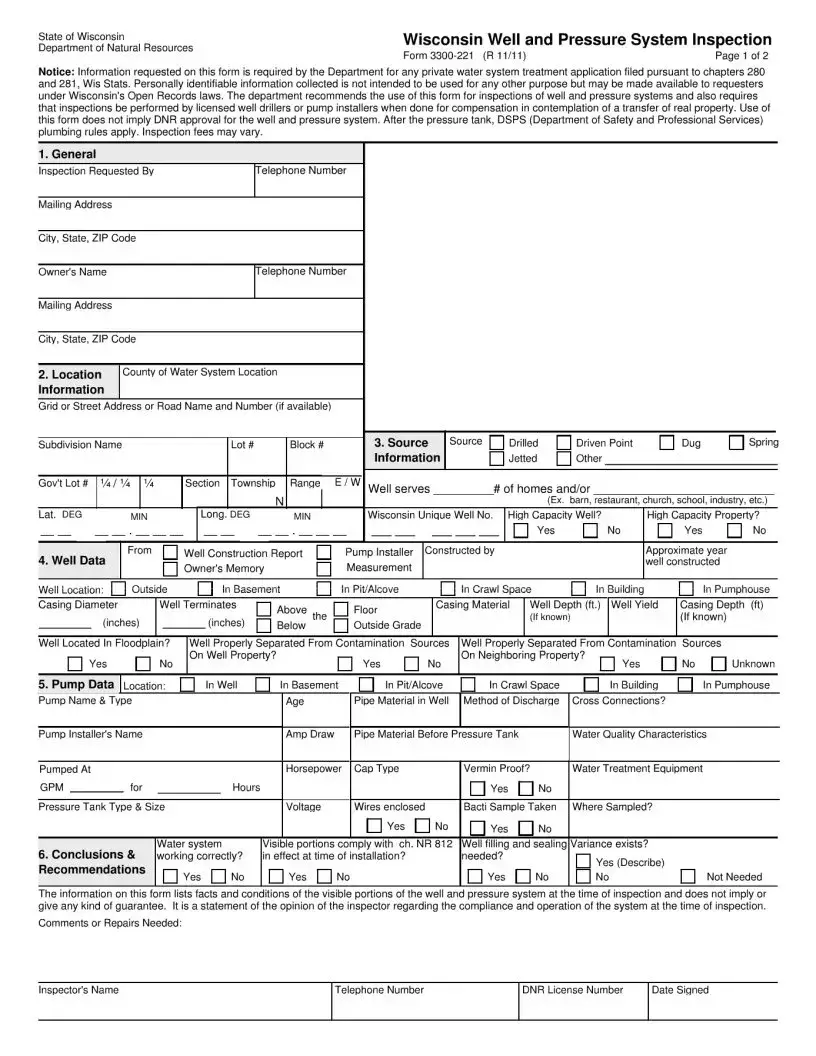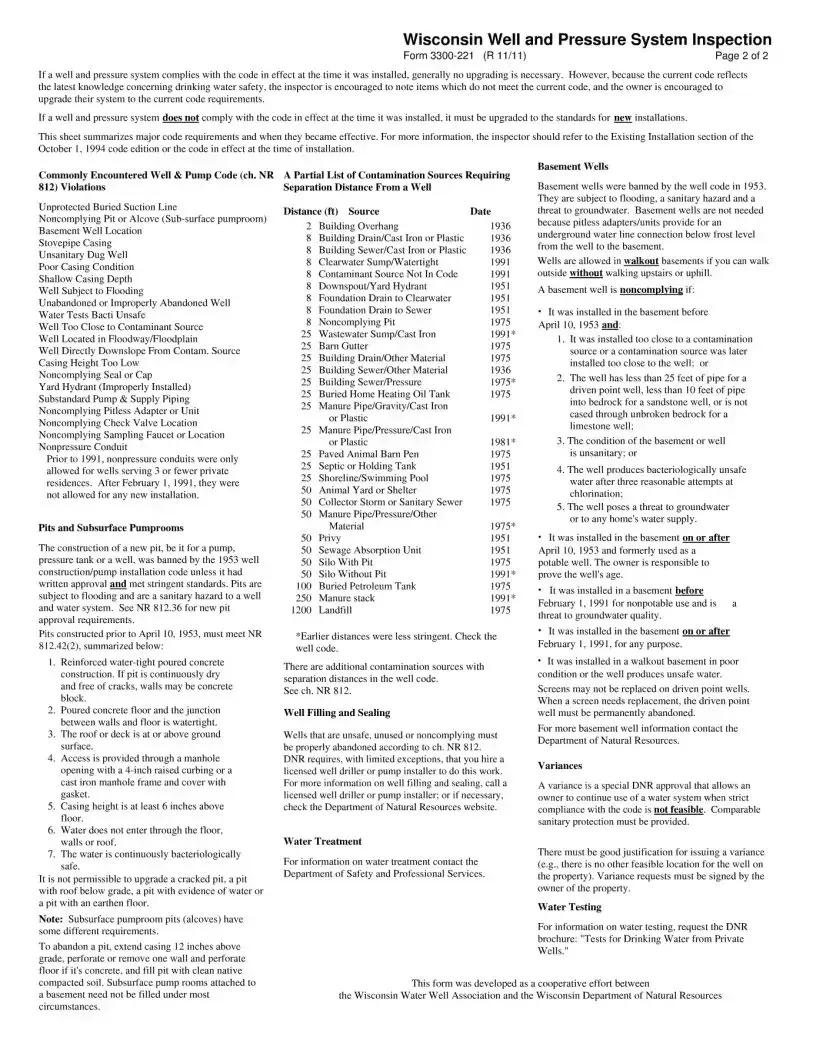The Wisconsin Well Inspection form shares similarities with the Home Inspection Report, primarily in its role of evaluating components of a residential property for performance and safety. Both documents provide detailed assessments that inform homeowners or potential buyers about the condition of specific structures or systems. Where the Well Inspection form focuses on water supply systems, the Home Inspection Report covers a broader range of home systems including electrical, plumbing, and structural elements, each designed to ensure the welfare and security of the inhabitants.
Comparable to the Radon Testing Report, the Wisconsin Well Inspection form also prioritizes health and safety by identifying potential hazards associated with home infrastructure. While the Well Inspection form evaluates the safeness and functionality of a property’s well water system to avert water-borne illnesses, the Radon Testing Report examines levels of radon gas within a property, aiming to mitigate risks associated with lung cancer. Both documents are integral to maintaining a healthy living environment, emphasizing preventive measures and remediation strategies.
Another document akin to the Wisconsin Well Inspection form is the Septic System Inspection Report. Both are centered on the evaluation of specific property systems crucial for daily living. The Well Inspection form assesses the condition and safety of the home's water supply, while the Septic System Inspection report focuses on wastewater treatment and disposal. Each serves a key role in assessing environmental and health standards, ensuring that these critical systems are operating effectively and safely.
The Lead-Based Paint Disclosure form also mirrors aspects of the Wisconsin Well Inspection form, as they both deal with health risks associated with residential environments. The Well Inspection form identifies any contaminants in a property's water supply, and the Lead-Based Paint Disclosure alerts to the potential presence of lead-based paint in homes built before 1978. Both documents are geared towards safeguarding residents from health hazards, making them essential for informed decision-making in real estate transactions.
Similar to the Energy Audit Report, the Wisconsin Well Inspection form assists homeowners in understanding specific aspects of their home's performance. While the Well Inspection focuses on the water system's condition, an Energy Audit evaluates how efficiently a home uses energy. These documents both aim to inform property owners about how improvements can lead to enhanced safety, efficiency, and ultimately, cost savings, highlighting areas where resources can be better conserved.
The Pest Inspection Report bears resemblance to the Wisconsin Well Inspection form as well, with both inspections seeking to identify and remediate conditions that could lead to property damage or health concerns. The Well Inspection form checks for water quality issues, and the Pest Inspection report searches for signs of insect or rodent infestations. Identifying these problems early can prevent significant damage and ensure the longevity and safety of the property.
Finally, the Property Title Search Report and the Wisconsin Well Inspection form both play critical roles in the process of buying or selling a home, though they focus on different aspects. The Well Inspection form assesses the safety and functionality of the property’s water well system, while the Property Title Search report ensures the property is legally available for sale without any disputes or liens. Each document aids in ensuring that the transaction can proceed smoothly, with a clear understanding of the property’s status and value.


